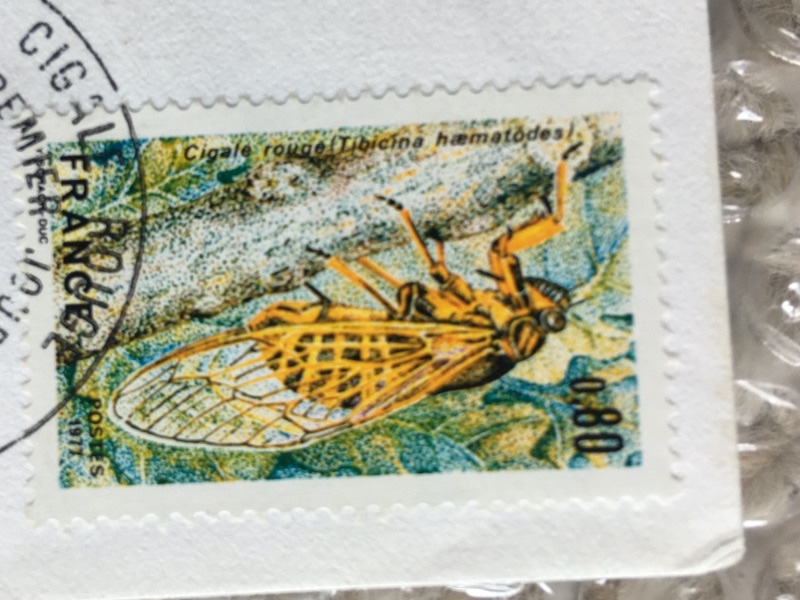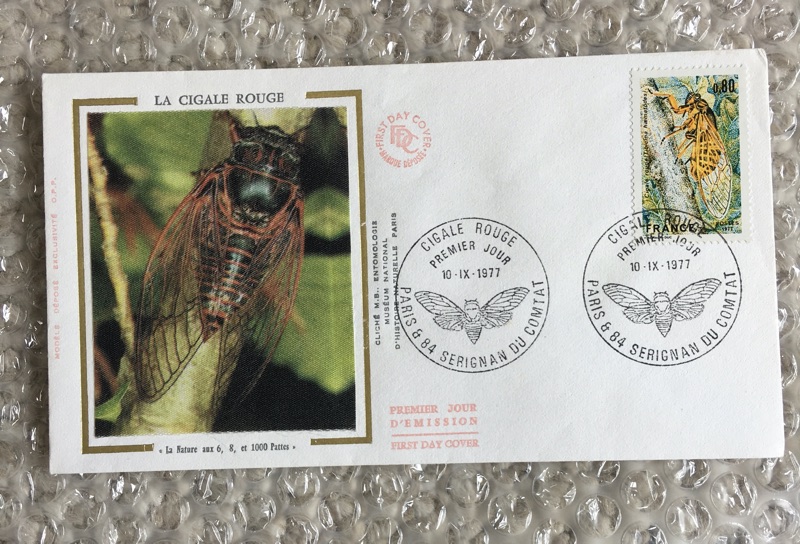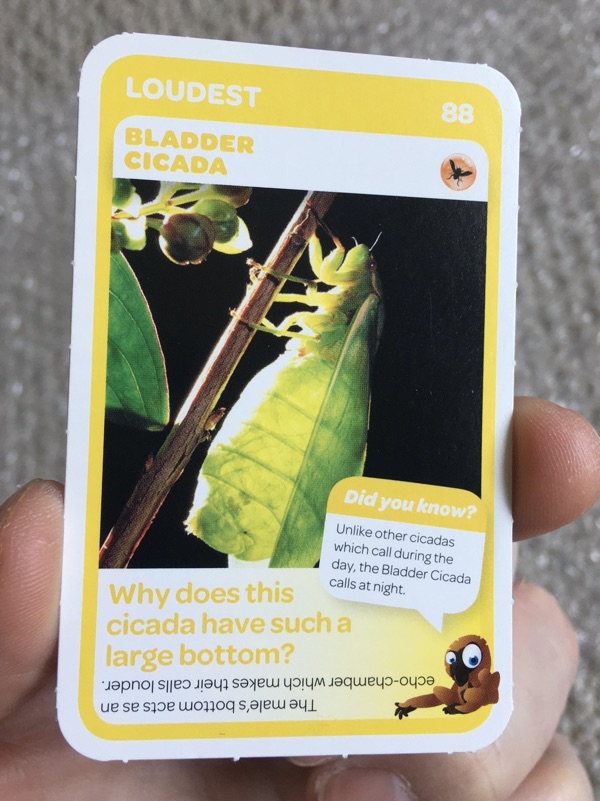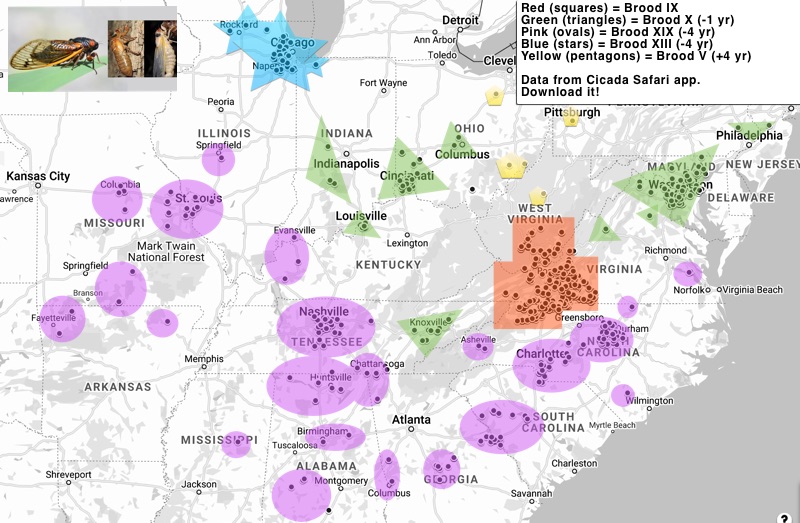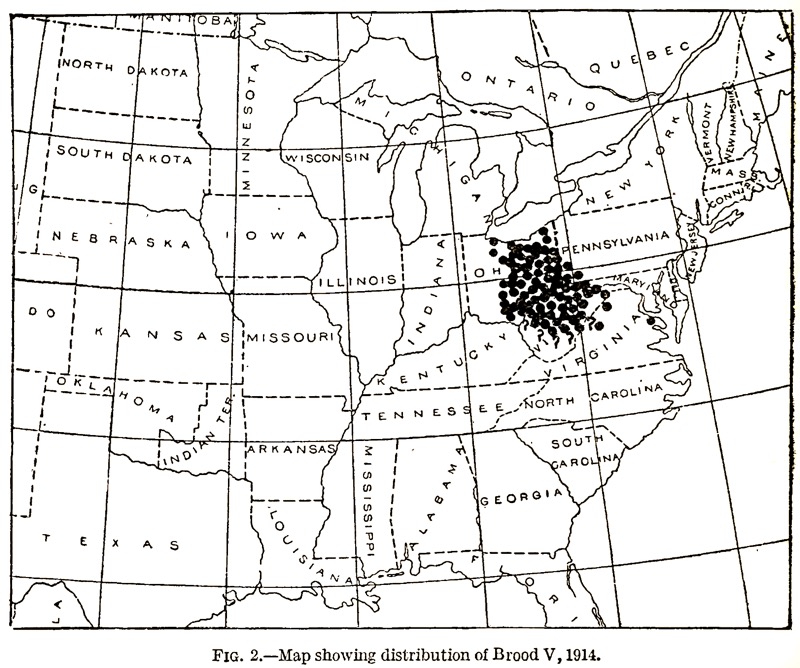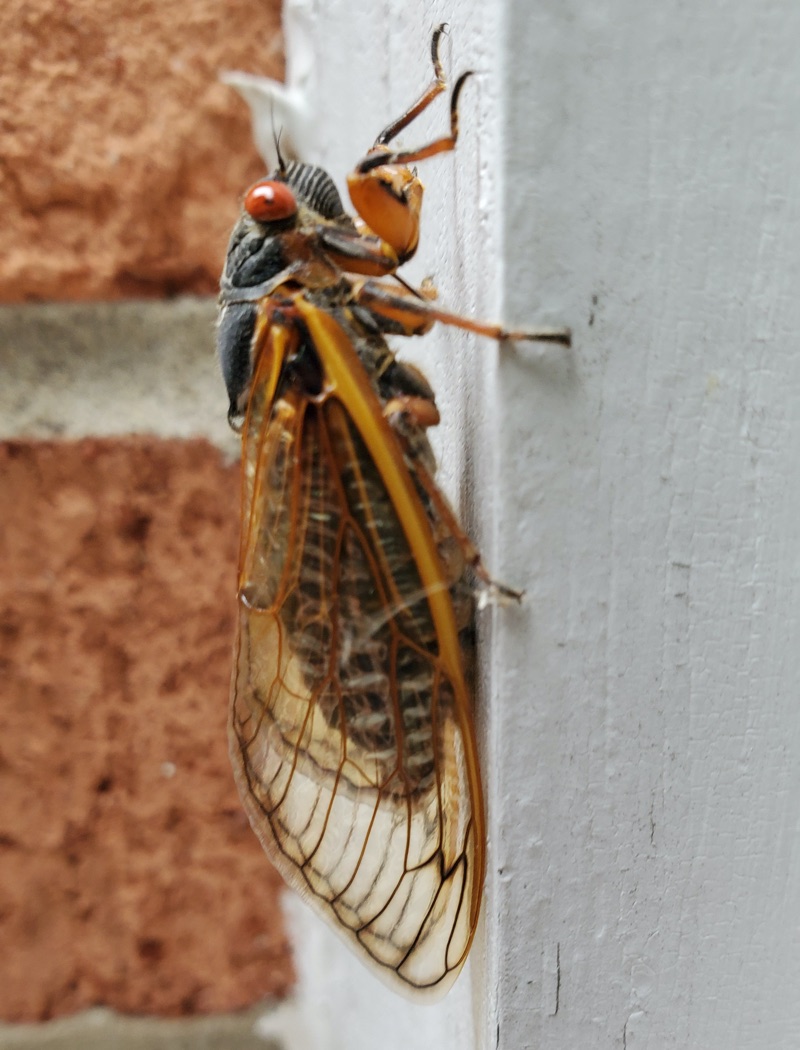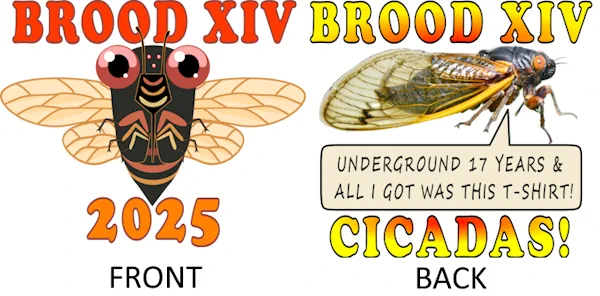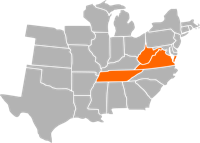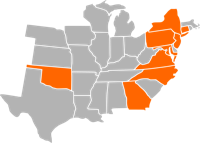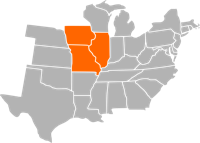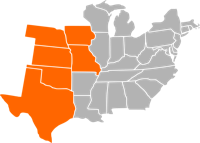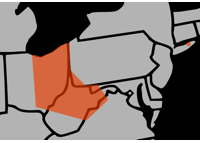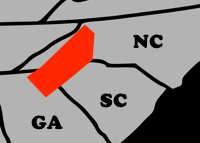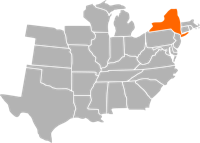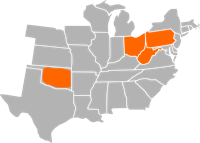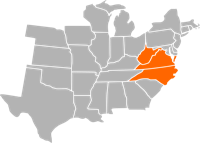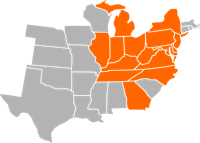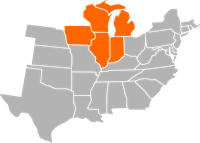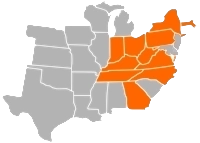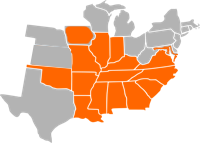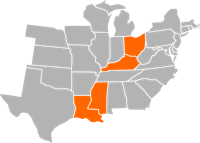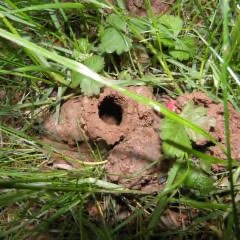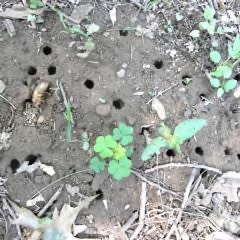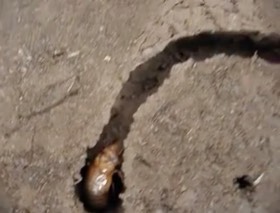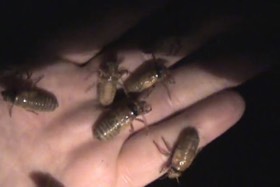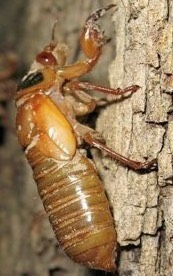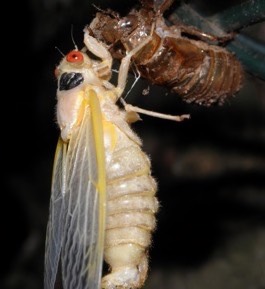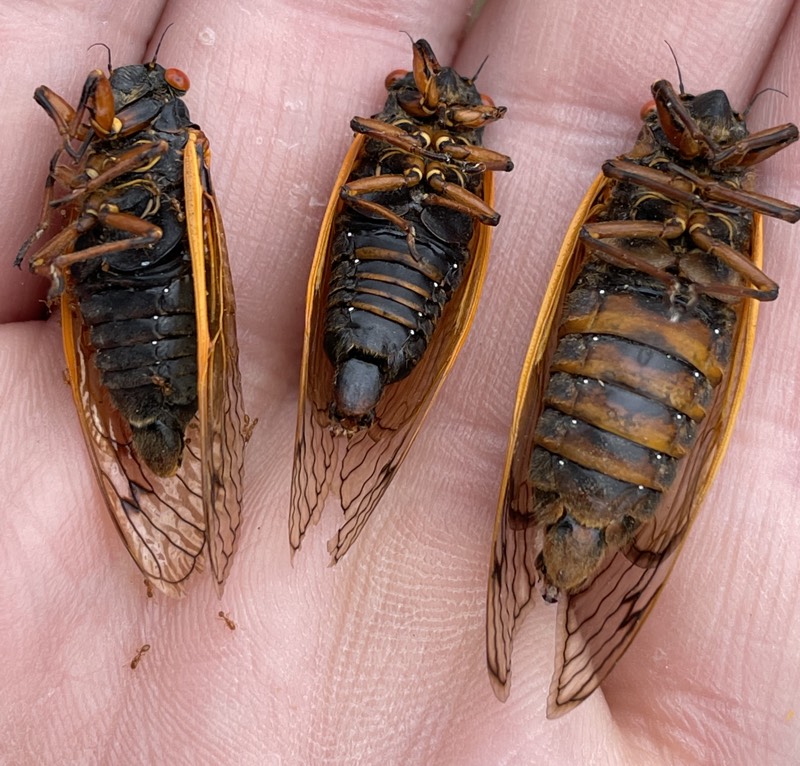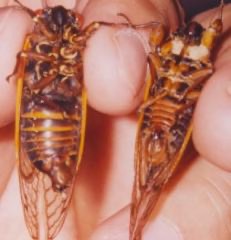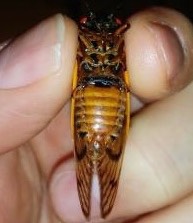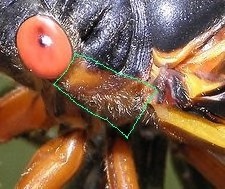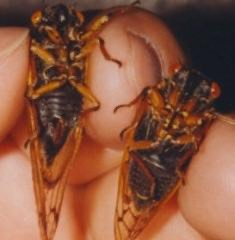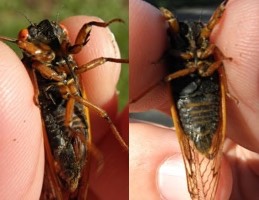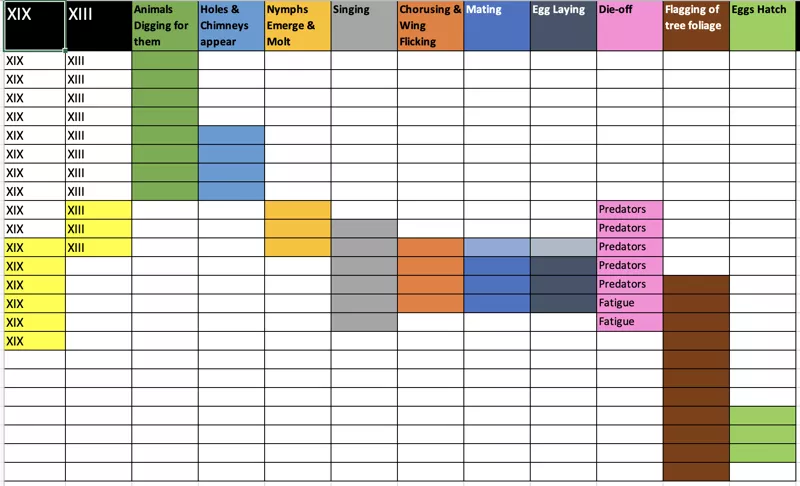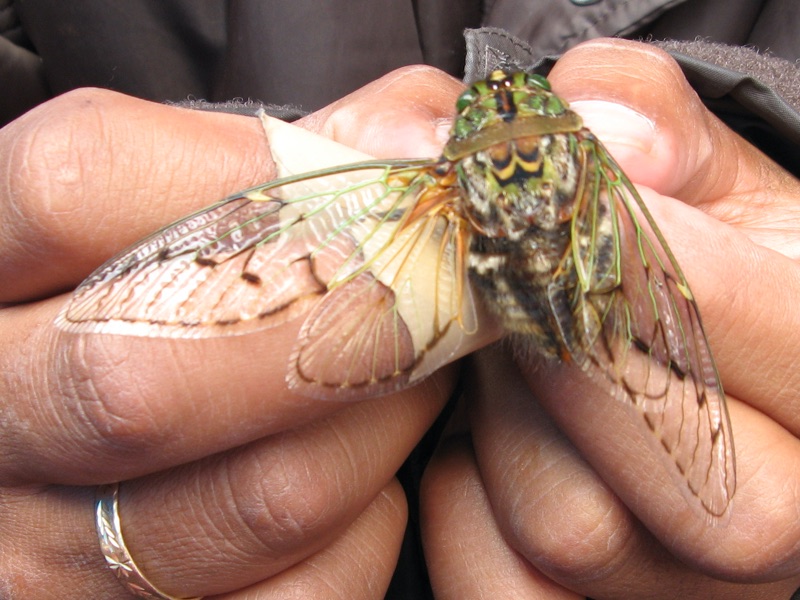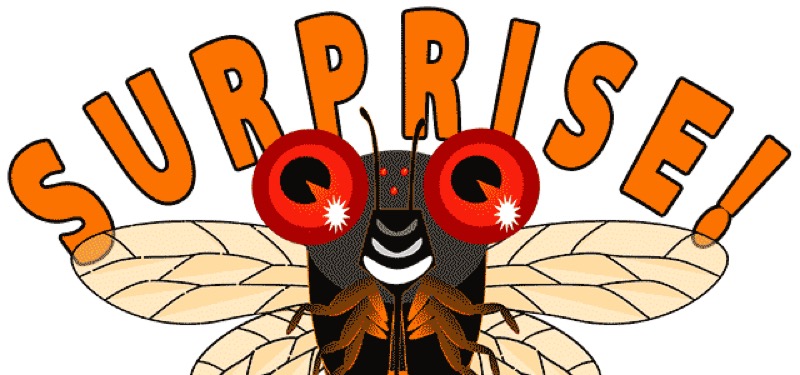This is from my “Cicada Humor” page from 1996-1997. It’s semi-humorous. For serious information visit the facts-only 17-year cicada page.
The 17-Year Cicada
Every 17 years a fearsome biological monstrosity drags its way to the surface of the earth. It comes only to mate and spawn; however, it imparts terror and disgust in the hearts and minds of every man, woman, child, and beast unfortunate enough to cross its path. This is no Hollywood fantasy, ladies and gentlemen, this creature is real, horribly real! Cast your trembling eyes upon mother nature’s most disturbing insectoid aberration…T
The Cicada a.k.a. “The 17-Year Locust”
July 17th, 1997
Seriously, folks, the cicada isn’t a locust, it’s, well, a cicada (a member of the Homoptera order of insects). These charming creatures are best known for their intense mating call, which sounds more or less like a lawn sprinkler, or a miniature AH-64 Apache Black Helicopter. When 10,000 or so of these suckers start screaming in your neighborhood you’ll think you’re in the middle of Apocalypse Now. Nowisthe time! Depending on where you live, these heinous herbivores should be dive-bombing your friends and family any day now.
Actually, they are more likely tofallout of a tree thanfly, but, rest assured, they will be landing somewhere on your body sometime soon.
Ilive in central New Jersey and right now we are up to our mandibles in a plague of these sap slurping oddities. Some breeds, including the green/yellow striped cicadas, rear their ugly heads every year, but, fortunately not in great numbers. The “periodic”, black-bodied, red-eyed, spawn of Beelzebub cicadas only present themselves once every 17 years;unfortunately,there are literally millions of them. Worst of all, they have a face, just like you or me!
Periodic cicadas live to be 17 years old (13 years in southern states), which means they’re the only insect that qualifies for a driver’s license in New Jersey. Actually, these creatures only spend two to four weeks of their lives as an adult. They spend the first 17 years underground sucking on roots! Exciting! Once the adults have mated, the female drills a hole in a tree branch with her butt (technically her ovipositor) and lays her eggs. The eggs soon hatch and the “nymphs” fall to the ground where they feed on root sap. As soon as the adults mate they croak and drop to the ground where they will decay and stink. If I were you I wouldn’t hang out under any trees this year. In the end, your best offense will be a shovel and a bucket, or, a hungry golden retriever.
Dan’s Cicada Diary for 1996
- Sunday, May 19th: Metuchen, New Jersey; I found the first desiccated cicada nymph exoskeleton on my patio. My cat disappears.
- Tuesday, May 21st: I found about 40 nymph exoskeletons on my patio, a pine tree and a maple tree. I also spotted an adult climbing the maple and two crippled adults rolling about the base of the tree.
- Wednesday, May 22nd: Bonanza! I found about 500 adults perched on just about everything in my yard: trees, patio furniture, the foundation of my home, the garden hose, garbage cans, the missing cat’s water dish, my hair…just plain everywhere! Gruesome!
- Saturday, May 25th: Avenel, New Jersey; Party at the Ritzow’s. Literally hundreds of adult cicadas perched high above in oak trees sneer at decadent humans sipping martini’s, playing croquet. Bourgeois homosapiens…bah humbug!
- Thursday, May 30th: Metuchen, New Jersey; Still no sign of the cat. Sitting outside on my patio around 8:30pm I hear a “snap”, “crackle” and “popping” sound. Rice Crispies? No. More like cicadas nymphs crawling out of their holes and on to my garden wall to molt into adult hood. Not the loveliest sight.
- Saturday, June 1st: Westfield, New Jersey; Dave Wilson and Claire Adas’ wedding. A beautiful ceremony and reception, with the exception of the 9000 uninvited cicadas: crawling up peoples legs, crunching underfoot, landing in refreshments…a moment to cherish and remember!
- Tuesday, June 4th: North Edison, New Jersey; The cicadas have begun to sing! All together they sound like a Boeing 767 is circling 40 feet overhead. The sound is that awesome. 10 inch deep piles of dying post coitus adults litter the base of trees. The invasion has only begun!
- Wednesday, June 5th – Monday, June 17th: Metuchen, North Edison, Colonia, Avenel, New Jersey; The invasion is in full effect! Home owners in North Edison and Colonia report having to haul away the dying bodies of cicadas in wheelbarrows! Residents describe the cicadas’ combined mating screams as “loud as a UFO” [how do they know what a UFO sounds like?] and “like a Mack Truck was floating ten foot above your head”! Someone even told me cicadas taste like shrimp! I guess they made the best of a bad situation.
- Wednesday, June 26th: Metuchen, New Jersey; It appears the invasion is over. All that remains is the dismembered, rotting corpses and the memories, sweet, sweet, memories. But remember, They’ll be back…in the year 2013!
- Saturday, August 3rd: Metuchen, New Jersey; Looking out my second story window I can clearly see the damage done by the 17-year cicadas. Brown patches of dead leaves speckle local oak and maple trees, revealing the branches where the female cicada has chosen to lay her eggs; an interesting “natural disaster”, but, not as heart-breaking as an earth quake or a flood. Clearly the most provocative news regarding cicadas is the current hatch of annual cicadas, which are larger than the “17-year” cicadas (thoroughly illustrated within this web page) and greener. Another dissimilarity is the difference in their respective mating calls: while the “17-year” cicada makes a whirring sound somewhere between the motor of a vacuum cleaner and a car alarm, the “annual” cicada sounds more like a lawn sprinkler or maybe a sewing machine. Although I can clearly hear hundreds of “annual” cicadas and I have found their shells, I haven’t visually located a single one ! Another cicada related event has been the recent hatch of “cicada killer” wasps. These two-inch long giant wasps only prey upon, our friend, the defenseless cicada. I haven’t located these creatures either, but, they are definitely out there. Cicadas beware!
- Wednesday, August 26th: Metuchen, New Jersey; the Tibicen cicadas continue to sing…
- Wednesday, November 6th: Metuchen, New Jersey; they are all dead or sucking on roots underground.
Cute names for the not so cute Cicada
- Flying cigar butts
- Flying turds
- The harbingers of apocalypse
- Impromptu doggie treats, hors d’oeuvres, missing Monopoly piece, etc…
- Sky Fudge
- Satan’s Parakeets
- Living hair curlers
- The name of an annoying acquaintance (example: “Blitzers”)
- Tree roaches
- Airbourne car alarms
- Sleeping bag buddies
